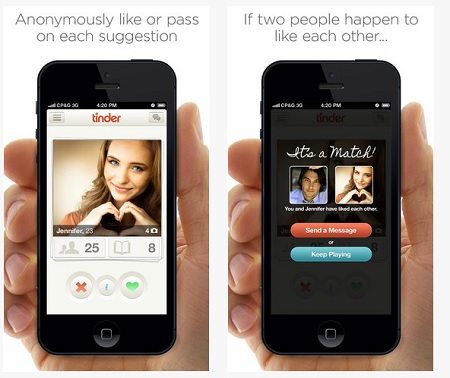Dating app Tinder is secretly rating the “desirability” of users with an algorithm… and it’s not just a measure of attractiveness, according to research by Fast Company.
Fast Company reports that this hidden ‘Elo’ score (a term used in chess to rank player skill levels), is determined using a complex algorithm.
It is made up of “a lot of factors” that isn’t just a count of how many times people swipe left or right on a profile, it’s a complicated algorithm that takes a lot of factors into account.
examples of these traits include having a fleshed-out profile, interesting photos, and a ‘like’ from one of Tinder’s power users.
‘It’s a way of essentially matching people and ranking them more quickly and accurately based on who are they are being matched up against,’ Tinder’s VP of product, Jonathan Badeen, told FastCompany.
‘It’s not just based on how attractive your profile picture is, or how many people swipe right and left, though. Rad explains: ‘It’s very complicated. It took us two and a half months just to build the algorithm because a lot of factors go into it.’
A ‘loss leader’
Tinder has become one of the most popular dating services since its launch in 2012. The smartphone app uses its members’ Facebook profiles to source photos and show basic information about them.
Members then swipe to the right to pick someone they would like to date or swipe to the left to reject a profile. Users can only send messages to each other if they have each picked the other party. Until now, there were no charges to use the app.
Tinder is owned by media giant InterActiveCorp (IAC), the company behind OKcupid, Match .com, and About, who is running it as a loss leader. IAC already own monetised dating apps and by running the free Tinder they keep price conscience people away from the competition. It does charge for paid add-ons to the service called Tinder Plus, offering tools such as a ‘rewind’ function to correct mistaken rejections.
Controversially in the UK, people over the age of 28 years old could pay nearly four times the price of their younger counterparts. In the US, the over-30s have to pay double the basic rate. UK users face a £3.99 monthly fee for the service if they are aged between 18 and 27, and £14.99 a month if they are aged 28 and above. In the US, the corresponding figures are $9.99 (£6.50) and $19.99 (£13).
The matchmaking industry generated $2.2bn in sales in the US alone in 2014, representing 4.8% growth since 2009, according to a study by the Ibisworld research group.
